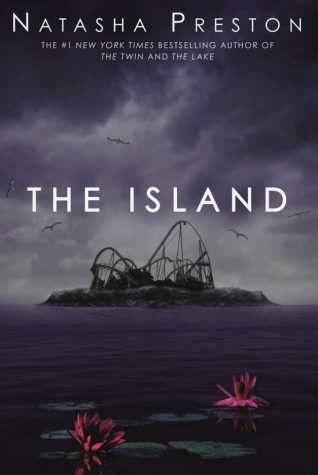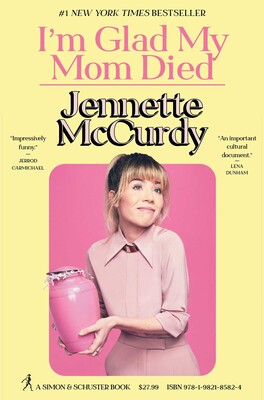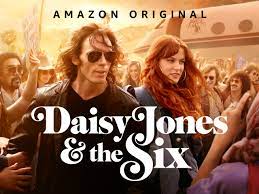Netflix adaptation of teen novel takes the world by storm
June 13, 2017
Bullying, depression, rape, self-harm, substance abuse, suicide, and abusive relationships. These difficult topics have teenagers across the nation glued to their computer screens. A new adaptation of a young adult novel containing these themes was released on March 31. It is already the most popular Netflix-produced show in history, and for good reason.
In 2007, Jay Asher published his debut novel, one that would eventually revolutionize the stigma surrounding teen suicide. “Thirteen Reasons Why” became a New York Times best-seller in 2011, and was recently adapted into a thirteen episode television series by Netflix.
“13 Reasons Why” is the first time that a mainstream show geared towards a young adult audience has confronted such serious issues head-on— a risk that needed to be taken.
The series does not shy away from the issues that are most prevalent in the lives of high school students. For that, the show can be commended for its admirable attempt to break the ice in conversations surrounding its controversial subjects. Australian actress Katherine Langford excelled in the role of Hannah, a teenage girl who makes the decision to take her own life. Hannah leaves her story behind in the form of thirteen cassette tapes, each dedicated to a different person in her life who influenced her choice to commit suicide. Each episode of the show is dedicated to one tape, as well as the other characters’ reactions to it.
Younger viewers, whose minds are typically very impressionable, may easily misunderstand the message and the intent displayed throughout the storyline. The audience may mistakenly interpret the plot as a message that suicide is a viable option when one is struggling with bullying, depression, abuse, or sexual assault. Unfortunately, the show does not explicitly express that there are other remedies for mental illness other than suicide – in a way, it almost glorifies suicide.
The series portrays counselors as unhelpful – people that you cannot trust and talk to – when, in reality, it is exactly the opposite. Counseling and therapy have the potential to save a life if the person struggling is willing to give it a chance. Hannah did not give it that chance. She reached out for professional help once and, after not immediately getting the results she wanted, killed herself. Additionally, the series includes a brief scene in which the protagonist, Clay, refuses to take his prescribed medication, implying that anti-depressants and similar drugs are not worth trying.
A minor character in the show, Skye, shows main character Clay her scars from self-harming, making a statement that “it’s what you do instead of killing yourself.” This sentence is completely false but young viewers may digest it as truth. Once these messages are embedded in their mind, they may feel compelled to adopt it as their own opinion.
After hearing the show’s synopsis, some falsely assume that “13 Reasons Why” is solely about depression and suicide. In addition to those heartbreaking topics, the show also explores the unsettlingly common phenomenon of abusive relationships. One of the main characters, Justin, is consistently abused throughout the series by his mother and her volatile boyfriend, both of whom suffer from a drug addiction. During a particularly disturbing scene, the mother’s boyfriend strangles Justin while his own mother looks on, not stepping in to help until Justin is nearly unconscious. In turn, Justin displays abusive behavior towards his girlfriend, Jessica, leading into the topic of abusive relationships and friendships between the teenage characters in the show. This abuse lends itself to bullying – one of the central themes of the show, and a major reason for Hannah’s suicide.
One of the major criticisms of the show and book is the concept of blaming other people for one’s own suicide. Ultimately, suicide is a personal decision, but the manner in which Hannah speaks of her impending death implies that her demise is due to the thirteen people on the tapes, as if they had collectively murdered her. The thirteen characters had various levels of influence on her choice to end her life, but the most prominent reasons behind it were her unacknowledged mental illness and lack of resilience.
However, “13 Reasons Why” is amazing at demonstrating how even the smallest things can affect people in such a big way. Although Hannah was mentally ill, her reactions to the events of the show were very realistic and appropriate for a teenage girl.
Additionally, the other characters’ reactions to Hannah’s suicide appeared to be frighteningly accurate. Her parents, adjusting to life without their only child, are heartbroken. Hannah’s peers suffer immensely from the guilt that she placed on them via the tapes. One of the characters is so tortured by Hannah’s death that he turns to suicide as well.
Netflix originally offered a brief advisory warning in the beginning of the final episode, which includes a graphic depiction of Hannah’s suicide. After receiving backlash from viewers on the ineffectiveness of the warning, Netflix promised to update “the messaging and resource language in the existing cards for episodes that contain graphic subject matter.” A second season of the show is in production, and it will undoubtedly come with more trigger warnings in response to the audience’s negative reaction.
“13 Reasons Why” was a beautifully executed series that certainly did Asher’s novel justice. Some may argue that suicide was not accurately portrayed within the series; regardless of if the depiction was valid or not, the show still had a compelling storyline and a talented cast that excelled in the roles that they played. The dark mood and nearly palpable intensity of each episode is breathtaking, and the universally relatable settings and characters instantly connect teenage viewers to the story.
Although some may not see it, there is a reason that this is the most watched show on Netflix and has taken the world by storm. I would recommend watching the series, as long as you exercise extreme caution, especially if you are sensitive to graphic imagery and depressing content. “13 Reasons Why” paved the way to open discussion surrounding suicide in teenagers; now, all you have to do is join the conversation.












